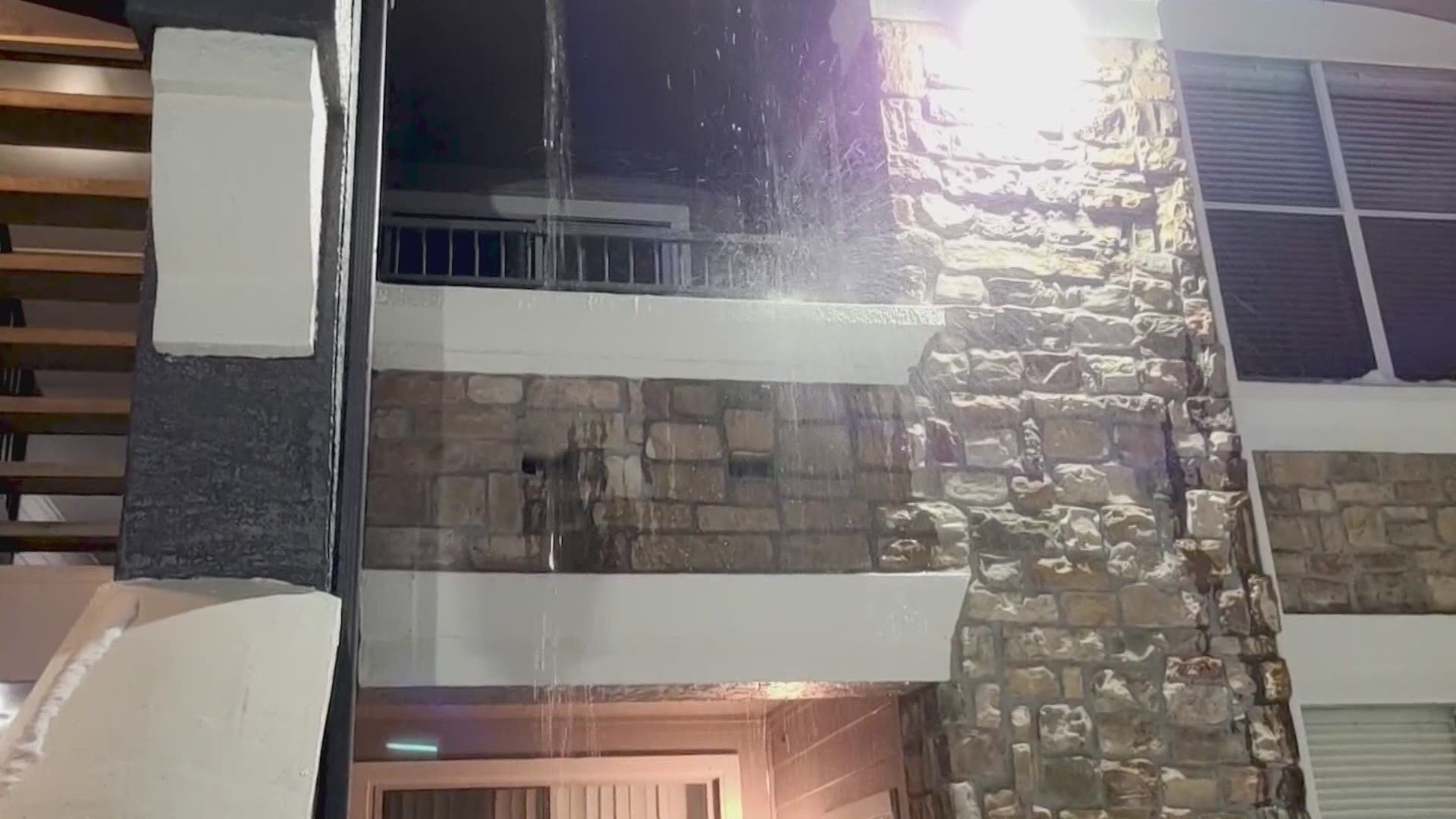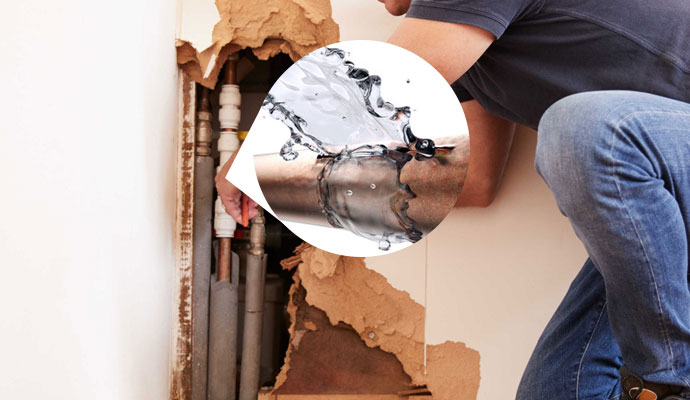We have found this great article involving How to Install and Connect a New Dishwasher down the page on the net and believe it made perfect sense to discuss it with you on this site.

A ruptured pipeline is a major emergency; you can only stand as you view water you pay dearly to rejoin with the planet. In even worse situations, you see a swimming pool on your kitchen area flooring, which is a terrific trip hazard, especially if you have children around. If the pipeline that burst was in your walls, bad news: you might require to repaint that entire section.
Exactly how can a tragedy like a burst pipe be avoided and also managed? Well, by listening to your specialist emergency plumbers as well as following these policies.
How do I know when my pipelines have burst?
Fluctuating water stress
Pipes do not simply burst in a day. You might have discovered that your kitchen faucet or shower doesn't run promptly when you transform the faucet. It might pause for a couple of secs and after that blast you with more pressure than normal.
In other instances, the water may seem regular in the beginning, then decrease in pressure after a few seconds.
Damp wall surfaces and water stains
Before a pipeline bursts, it will certainly leak, many times. If this persistent leaking goes unnoticed, the leakage may finish right into a vast laceration in your pipeline. One very easy means to avoid this emergency is to watch out for wet wall surfaces ad water discolorations. These water discolorations will certainly lead you right to the leakage.
Puddles under pipes and also sinks
When a pipe ruptureds, the outflow creates a puddle. It might show up that the puddle is expanding in size, and no matter the number of times you wipe the pool, in a couple of mins, there's one more one waiting to be cleaned. Often, you may not have the ability to map the pool to any noticeable pipes. This is a sign to call a professional plumber.
Untraceable trickling noises
Pipe ruptureds can occur in the most undesirable places, like within concrete, inside wall surfaces, or under sinks. When your house goes quiet, you might be able to hear an annoyingly persistent leaking noise. Even after you've examined your shower head as well as kitchen faucet, the dripping might continue.
Precious visitor, the trickling might be coming from a pipeline inside your walls. There isn't much you can do regarding that, other than tell an expert plumber.
Shut off the Water
When water freezes, it increases in volume by regarding 9 percent. And it expands with incredible force: The stress inside pipelines may go from 40 pounds per square inch to 40,000 psi! No pipeline can hold that much pressure, so it bursts. The break may take place where the ice kinds, however regularly, it occurs where water stress discovers a weak point in the pipeline. That may be inches and even feet from the icy location. Find the water shutoff valve and also switch off the water to avoid more damages. You could additionally need to turn off the electrical power too, depending upon where the leakages happens as well as just how big it is.
Contaminated water
Lots of people assume a ruptured pipe is a one-way electrical outlet. Fairly the contrary. As water drains of the hole or gouge in your plumbing system, impurities find their method.
Your water may be polluted from the resource, so if you can, inspect if your water tank has any kind of problems. However, if your alcohol consumption water is supplied and cleansed by the city government, you ought to call your plumber promptly if you see or scent anything amusing in your water.
What do I do when I detect a burst pipeline?
Your water meter will certainly continue to run even while your water wastes. To lessen your losses, locate the major controls and turn the supply off. The water mains are an above-ground structure at the edge of your home.
How to Fix & Detect a Leaking Pipe
How Do I Know if a Pipe is Leaking?
Leak detection tests can help you determine if your pipe has a leak. Even if you don’t see an apparent leak, you should still conduct leak detection tests regularly to save water and money—and prevent major damage to your home.
Water meter. It can be helpful to figure out what your usual water meter usage numbers are and then monitor them regularly. To monitor your meter, first, turn off all water faucets in your home. Check the meter and write down the numbers. In a few hours, check the meter again. If the numbers have changed, you have a leak. Water gauge. Use a water gauge to test your water pressure. Your showerhead should produce a certain amount of water pressure based on its model and design. If the pressure is lower than it is supposed to be for that specific showerhead, your home likely has a leak. Puddles. Look inside your bathroom, laundry, and kitchen sink cabinets. Puddles around the cabinets or around toilets, tubs, showers, and washing machines indicate the presence of a leaking pipe. You may also notice loose tiles, peeling or flaking paint, or mold caused by water accumulation. Napkin test. Even if you don’t see any puddles, you may still have a leak. You can test for water leaks in the bathroom, laundry, and kitchen by wiping below-sink connections with a napkin, paper towel, or piece of toilet paper. If it becomes damp, you probably have a leaking pipe under the sink. Discolored walls. Walls that are discolored—usually with brown or yellow stains—or bulging might mean that they have been impacted by water damage caused by a leaking pipe. Smell. A leaky pipe will create sitting water, and over time, that water may develop a musty smell. If your home smells musty, but you can’t locate the source, it may be due to a leak. Steps for Fixing a Leaking Pipe
A leaky drain can be remedied by tightening the pipe base, replacing the drain seal, caulking the rim, and tightening the pipe nut. Similarly, a leaking toilet pipe can be treated by tightening the packing nut. You may also need to replace the valve. A leaky faucet may just need tightening or replacement of the washers. If that doesn’t work, consider replacing your faucet. If your pipe has a hole in it, you may want to use a pipe leak sealer or pipe leak tape. This quick fix for water pipe leaks can also temporarily fix a copper pipe leak. https://www.ahs.com/home-matters/quick-tips/how-to-tell-if-pipes-are-leaking/

I was introduced to that write-up about How to install a dishwasher safely through a good friend on another web address. Remember to take the opportunity to distribute this article if you appreciated it. I appreciate reading our article about How to Install and Connect a New Dishwasher.
Water woes? Connect.